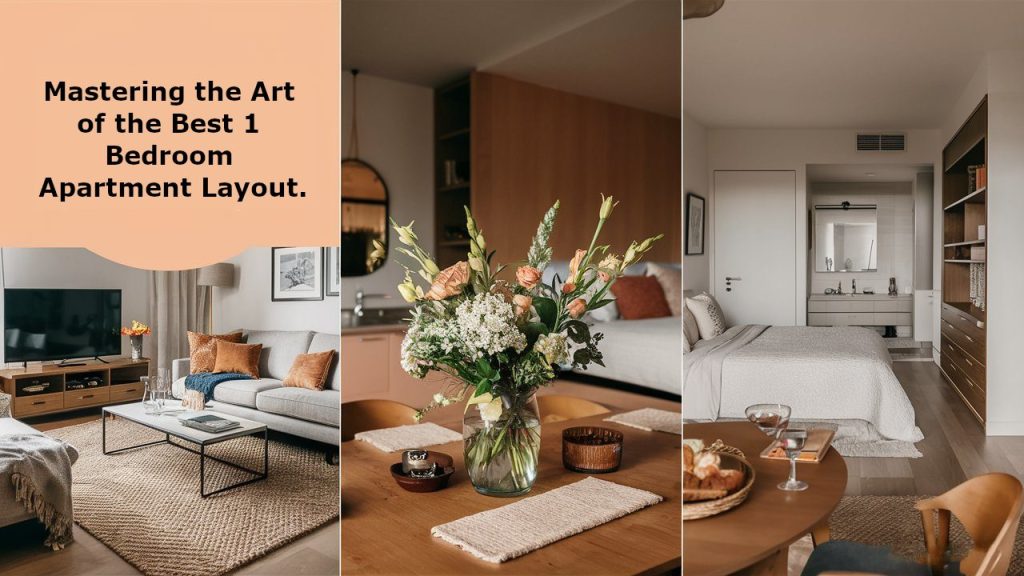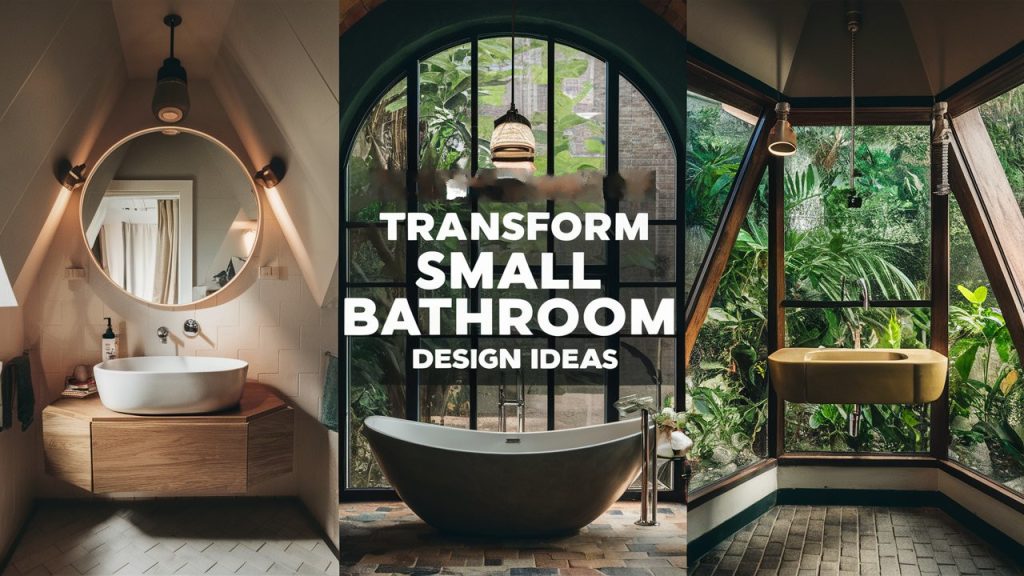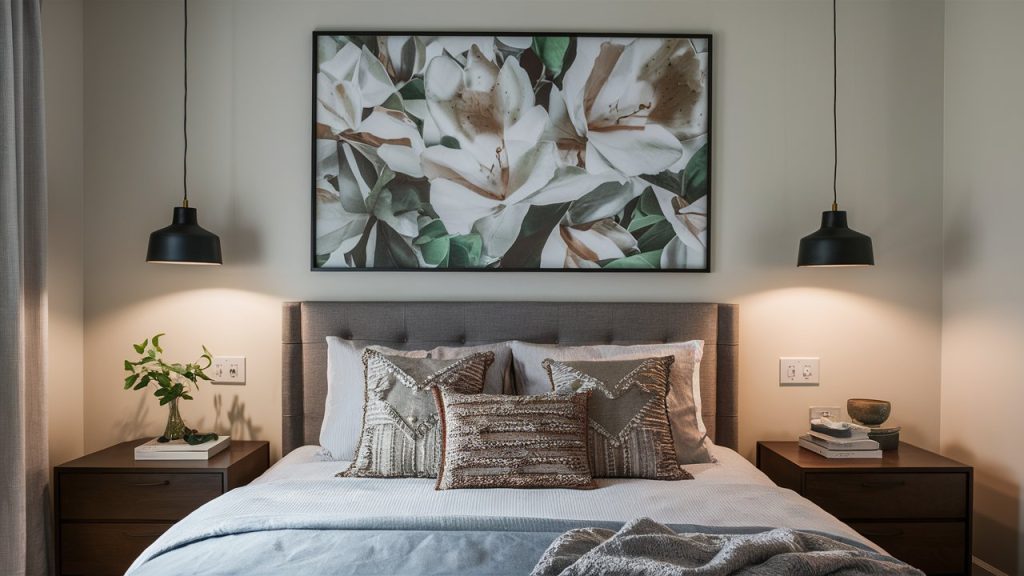Rustic home decorations are more than just a design choice—they’re a way of life. Inspired by the natural world, rustic interiors create a sense of warmth, simplicity, and comfort that feels both timeless and welcoming. Whether you’re redecorating a modern apartment or transforming a countryside cottage, rustic home decorations are adaptable to all kinds of spaces. As we enter 2025, the rustic style is evolving—becoming sleeker, more minimal, and in tune with contemporary needs. But it still retains the same essential charm, drawing on natural materials and earthy colors to create a cozy, lived-in ambiance.
In this article, we’ll explore the top trends in rustic home decorations, focusing on how you can modernize the style, incorporate new elements, and balance rustic charm with contemporary living.
Key Takeaways
- Rustic home decorations continue to evolve, blending modern minimalism with traditional natural elements.
- Key materials in 2025 rustic designs include wood, stone, metal, and sustainable textiles.
- Nature-inspired decor, vintage elements, and neutral color schemes remain strong, with a modern twist.
- Lighting and textiles are critical for creating a warm, inviting rustic atmosphere.
- Sustainability plays a huge role in today’s rustic home trends, with upcycling and eco-friendly choices becoming more prominent.
Table of Contents
What Makes Rustic Home Decorations So Popular?
Rustic home decorations have stood the test of time due to their ability to create cozy, approachable spaces that make people feel at home. The rustic style is defined by its emphasis on natural materials, earthy textures, and a connection to the outdoors. These elements not only add visual appeal but also evoke feelings of warmth, nostalgia, and relaxation.
One of the biggest draws of rustic decor is its ability to create spaces that feel grounded and authentic. By incorporating wood, stone, metal, and other organic materials, rustic design invites nature inside, making it perfect for those who want to bring the outdoors into their homes. Additionally, rustic style often focuses on sustainability—many rustic decorations are crafted from reclaimed or repurposed materials, making it an eco-friendly choice for today’s conscious consumers.
The Shift Towards Modern Rustic Decor
While traditional rustic decor is rooted in farmhouse-style living, today’s trends incorporate modern twists. In 2025, rustic designs are moving away from heavy, cluttered aesthetics and toward sleek, minimalist looks that still retain the warmth and charm rustic style is known for. Here’s how modern rustic decor is changing the game:
- Minimalist Rustic:
The focus is shifting to clean lines and simple shapes that highlight the natural beauty of materials. Gone are the days of bulky, oversized furniture. Now, rustic pieces are streamlined, with modern finishes and functional designs that blend seamlessly into any home. - Neutral Color Palettes:
Rather than relying on warm reds and oranges that were once staples of rustic design, the color palette is moving toward neutral tones like soft grays, whites, taupes, and muted browns. These colors create a sophisticated backdrop that highlights the rustic elements without overwhelming the space. - Refined Materials:
In modern rustic decor, materials are refined yet still carry a natural feel. Think polished wood finishes, stone countertops, and matte metal fixtures. These choices elevate rustic design, making it both timeless and contemporary.

Wood and Natural Elements: The Heart of Rustic Style
At the core of rustic home decorations lies a love for natural materials. Wood, in particular, is central to creating that earthy, lived-in feel that defines rustic decor. Whether it’s reclaimed barnwood or a fresh walnut dining table, wood instantly adds warmth and character to any room. Similarly, other natural elements like stone, leather, and metals (especially in matte or brushed finishes) complement wooden accents beautifully, offering texture and contrast.
In addition to wood, elements like exposed stone walls, leather armchairs, and iron fixtures are becoming increasingly popular in modern rustic spaces. These materials not only look great, but they also provide an organic, grounded feel that connects interior design with the natural world.

Rustic Home Decorations with a Touch of Industrial Vibes
One of the biggest trends in rustic design right now is the fusion of rustic and industrial styles. Industrial elements like exposed beams, metal accents, and factory-style light fixtures are merging seamlessly with rustic materials, creating a space that feels both raw and refined. Here’s why this combination works so well:
- Exposed Materials:
Both rustic and industrial designs thrive on raw materials. While rustic design favors wood and stone, industrial style brings in steel, iron, and concrete, resulting in a bold, yet balanced look. - Urban and Rural Mix:
The blend of industrial design—think exposed pipes, concrete floors, and steel structures—with the warmth of rustic elements like wood, leather, and wool makes it perfect for both city apartments and country homes. - Edgy Aesthetics:
The industrial rustic combo introduces a more rugged, urban edge to the home. It adds a sense of history and character, as if the space has been lived in for years.
Table: Comparing Traditional Rustic and Industrial Rustic Elements
| Rustic Elements | Industrial Elements |
| Reclaimed wooden beams | Exposed steel beams |
| Leather sofas | Metal-framed furniture |
| Vintage wooden furniture | Concrete and steel accents |
| Soft, natural textiles | Industrial-style lighting fixtures |
Neutral Color Palettes: A Timeless Rustic Trend
Neutral colors are the cornerstone of any rustic home. The beauty of rustic style lies in its simplicity, and neutral color schemes are the perfect way to create a calm, inviting atmosphere that lets the natural materials shine. Grays, browns, whites, and beiges dominate the rustic color palette, offering a timeless backdrop for the more tactile elements of rustic design.
Creating Balance:
Neutral tones also help create balance in rustic spaces by preventing the room from feeling too heavy or overwhelming. For example, pairing a dark wooden dining table with light beige walls allows the table’s rich texture to stand out without overpowering the space. Additionally, neutral tones provide the flexibility to mix and match various textures and materials without clashing.

Upcycled and Vintage Decor: Sustainability Meets Style
Upcycling and repurposing old materials are more than just trends—they’re a way of life for many people embracing rustic home decorations. Sustainable living is at the forefront of the rustic decor movement, with vintage furniture, antique accessories, and repurposed wood taking center stage. Not only does this practice reduce waste, but it also brings character and individuality to a space.
- Antique Furniture:
Vintage furniture is a major part of the rustic trend. Whether it’s an old wooden armoire, a vintage leather armchair, or a distressed coffee table, antiques add charm and history to your home. - Repurposed Wood:
Repurposing wood from old barns, fences, or shipping pallets is a sustainable way to add rustic touches to your home. Reclaimed wood has a unique story and texture that new wood simply can’t replicate. - Repurposed Items:
Old windows, doors, or ladders can be transformed into decor pieces or functional items, adding character and functionality to your space.
Nature-Inspired Rustic Decor
Rustic decor isn’t just about the materials—it’s about bringing the outdoors in. Nature-inspired rustic decor incorporates elements like greenery, natural light, and open spaces to create a harmonious environment that feels connected to the natural world.
- Plants and Greenery:
Adding indoor plants—like ferns, succulents, or even larger leafy plants—can breathe life into rustic spaces. Not only do plants add color and texture, but they also help purify the air. - Natural Light:
Embracing natural light is a key aspect of rustic design. Large windows, skylights, and open-plan layouts that allow light to flood the room help connect the space to the outdoors. - Wooden Accents:
Wood paneling, reclaimed wooden shelves, and driftwood art help reinforce the connection to nature while also creating an aesthetically pleasing space.

Textiles in Rustic Home Decorations
Textiles are an essential part of rustic home decor, adding softness, warmth, and depth to a room. Whether it’s a handwoven throw on the sofa or a vintage rug on the floor, textiles enhance the rustic charm by adding layers of comfort.
- Cozy Throws and Blankets:
Wool and linen throws provide warmth and texture, making them perfect for snuggling up on chilly evenings. - Natural Fabrics:
Materials like linen, cotton, and wool are staples in rustic design. These fabrics not only feel comfortable but also blend beautifully with natural wood and stone. - Textured Cushions and Rugs:
Adding a mix of textured cushions and area rugs creates depth in rustic interiors. Whether it’s a thick wool rug or leather cushions, texture plays a major role in bringing rustic spaces to life.
Table: Best Textiles for Different Rustic Rooms
| Room | Best Textiles |
| Living Room | Wool throws, linen curtains |
| Bedroom | Cotton sheets, knitted blankets |
| Dining Room | Leather seat covers, plaid cloths |
Lighting: Setting the Mood with Rustic Fixtures
Lighting in rustic home decorations is all about creating ambiance. Soft, warm lighting enhances the earthy tones of rustic materials, making spaces feel intimate and cozy. Vintage-inspired Edison bulbs, wrought iron chandeliers, and rustic pendant lights are popular choices to achieve this effect.
Rustic Kitchens: A Hub of Comfort and Style
The kitchen is often considered the heart of the home, and rustic decorations in this space bring a sense of warmth and hospitality. Think wooden cabinetry, open shelving, and vintage-inspired appliances. Farmhouse sinks, butcher block countertops, and wooden island tables give the kitchen a welcoming, rustic charm while still being functional.
Rustic Bathrooms: A Spa-Like Retreat
Rustic bathrooms are the perfect mix of comfort and luxury. Wooden vanities, stone-tiled floors, and freestanding tubs create a spa-like environment that feels both serene and rustic. A well-designed rustic bathroom can transform your daily routine into a peaceful, natural retreat.
Creating a Rustic Outdoor Oasis
Rustic decor doesn’t need to stay inside your home. Outdoor spaces can also benefit from rustic elements like reclaimed wood furniture, metal firepits, and hanging plants. Consider designing a rustic porch, garden, or patio that blends seamlessly with nature, offering a retreat for relaxation and entertainment.
Conclusion
Rustic home decorations continue to captivate us with their warmth, authenticity, and timeless charm. Whether it’s through modern twists, sustainability, or nature-inspired touches, rustic decor offers endless opportunities to create a cozy, inviting home. By embracing the key trends of 2025, you can infuse your living space with personality, comfort, and a deep connection to the natural world.
Frequently Asked Questions
What are the main characteristics of rustic home decorations?
Rustic decor emphasizes natural materials like wood and stone, earthy color schemes, and simple, functional designs. It creates a warm, cozy, and inviting atmosphere.
How can I mix modern and rustic decor?
Mixing modern and rustic decor involves balancing sleek, minimalist designs with natural materials. Keep the color palette neutral to create harmony between the two styles.
What color palette is best for rustic home decor?
Neutral tones like soft grays, whites, and taupes are ideal for rustic spaces. These colors allow natural materials to stand out while creating a calm, balanced environment.
Are rustic home decorations suitable for small spaces?
Yes, rustic decor can work well in small spaces. Opt for minimalist rustic furniture, light neutral colors, and an emphasis on natural light to make small rooms feel larger.
How can I add rustic elements to my kitchen?
Incorporate wood cabinetry, open shelving, and farmhouse-style sinks. Reclaimed wood countertops and vintage accessories also add rustic charm to the kitchen.
What are the best materials for rustic home decorations?
Wood, stone, metal, and leather are key materials in rustic decor. These materials create an organic, grounded feel that is both timeless and inviting.
Author Bio

Robert Martin is a passionate blogger and versatile content creator exploring the intersections of personal finance, technology, lifestyle, and culture. With a strong background in financial literacy and entrepreneurship, he helps readers make smarter money moves, build sustainable side hustles, and achieve financial independence.
Beyond finance, Robert shares his insights on home decor and gardening—offering practical ideas for creating beautiful, functional living spaces that inspire comfort and creativity. He also dives into the dynamic worlds of sports and celebrity news, blending entertainment with thoughtful commentary on trends that shape today’s pop culture.
From decoding the latest fintech innovations to spotlighting everyday success stories, Robert delivers content that’s informative, relatable, and actionable. His mission is to empower readers to live well-rounded, financially confident lives while staying inspired, informed, and ahead of the curve.




